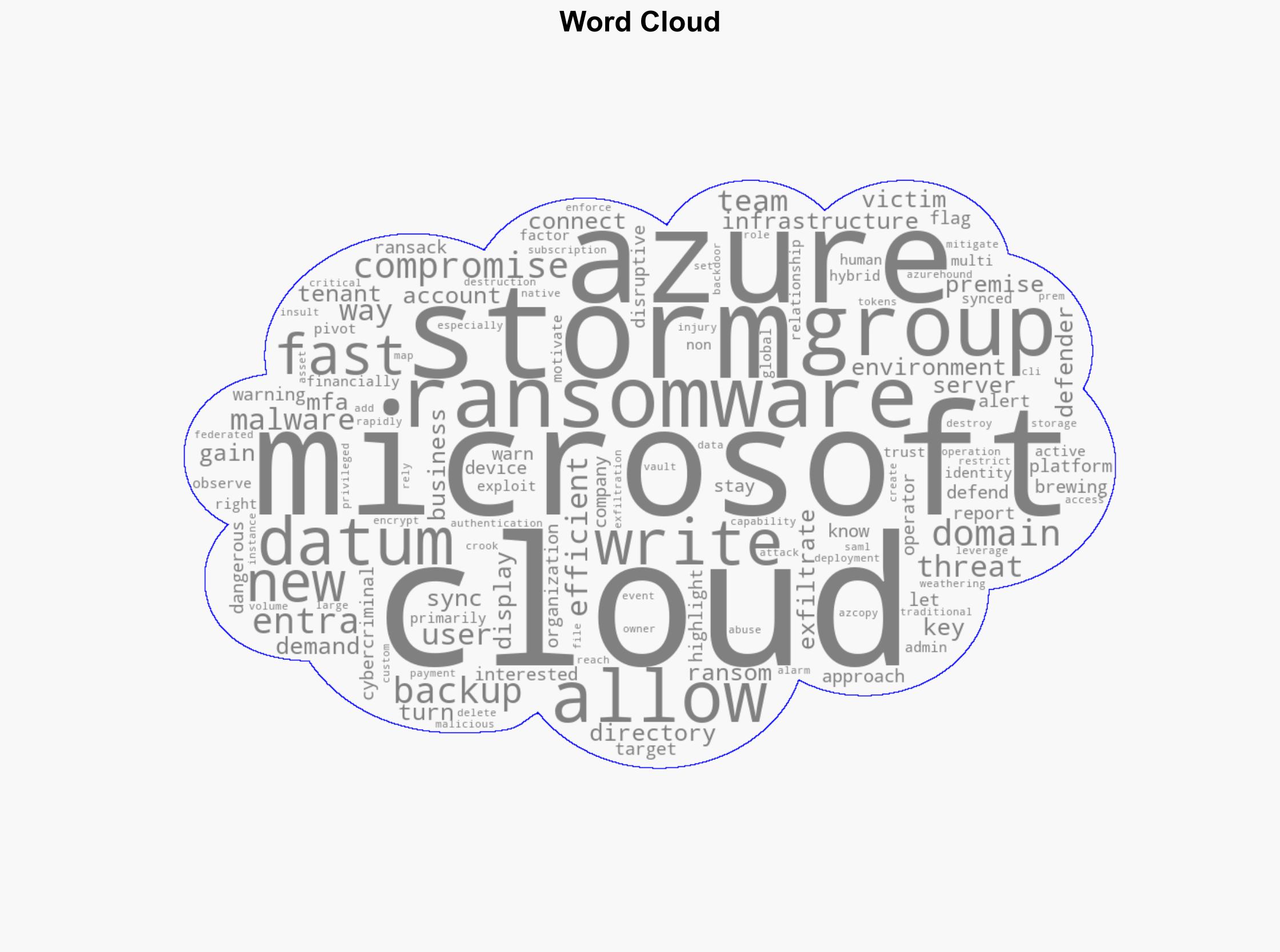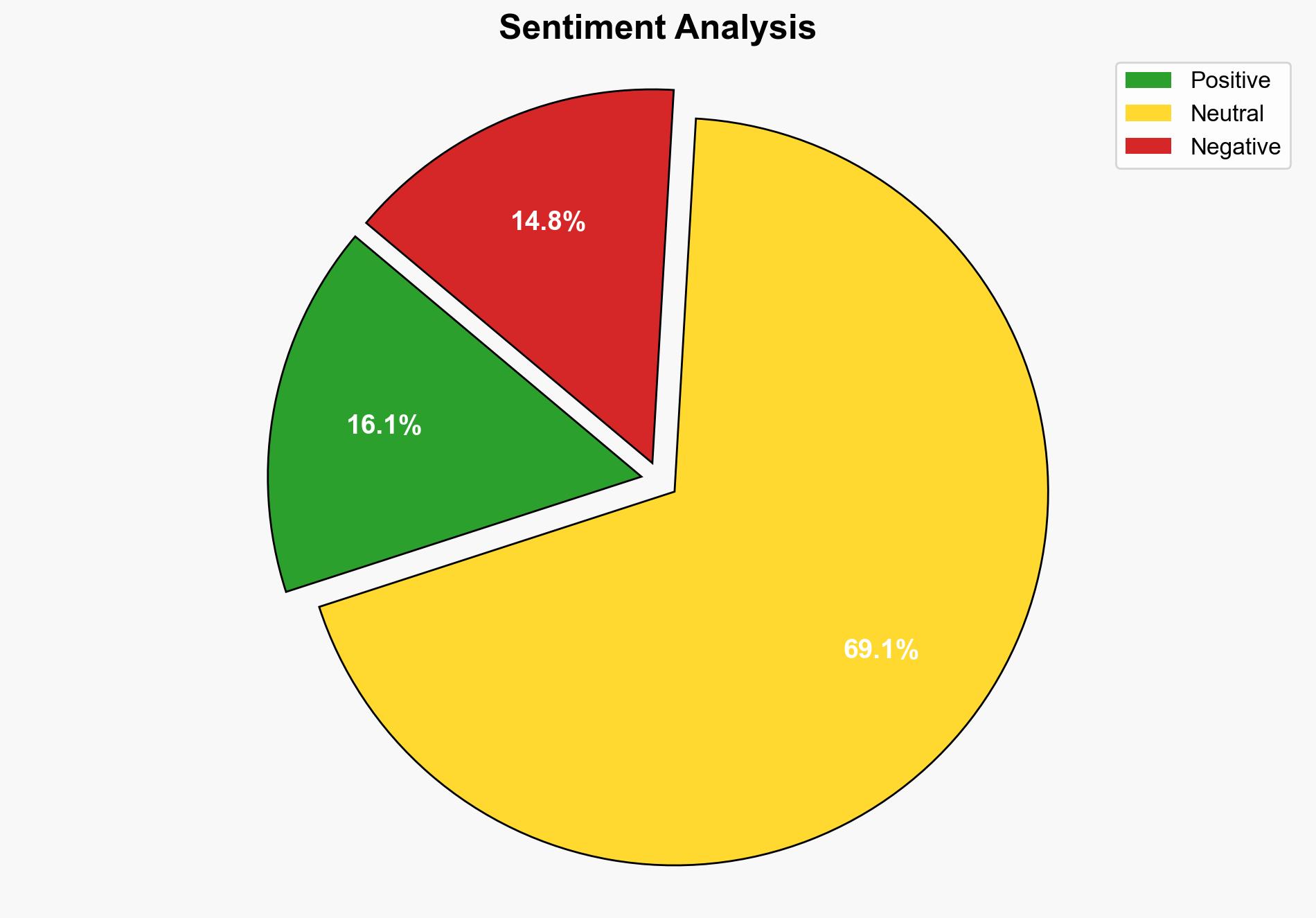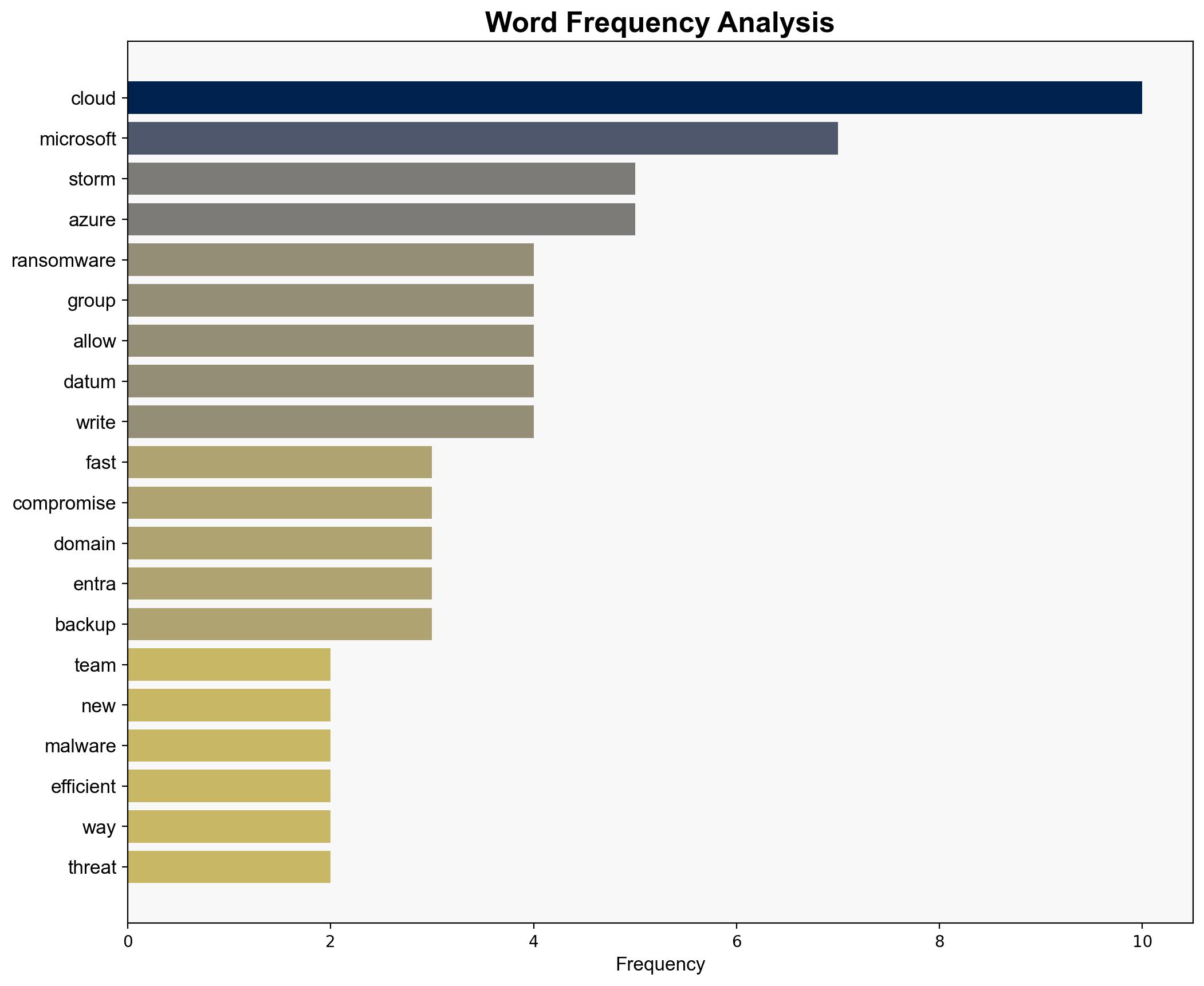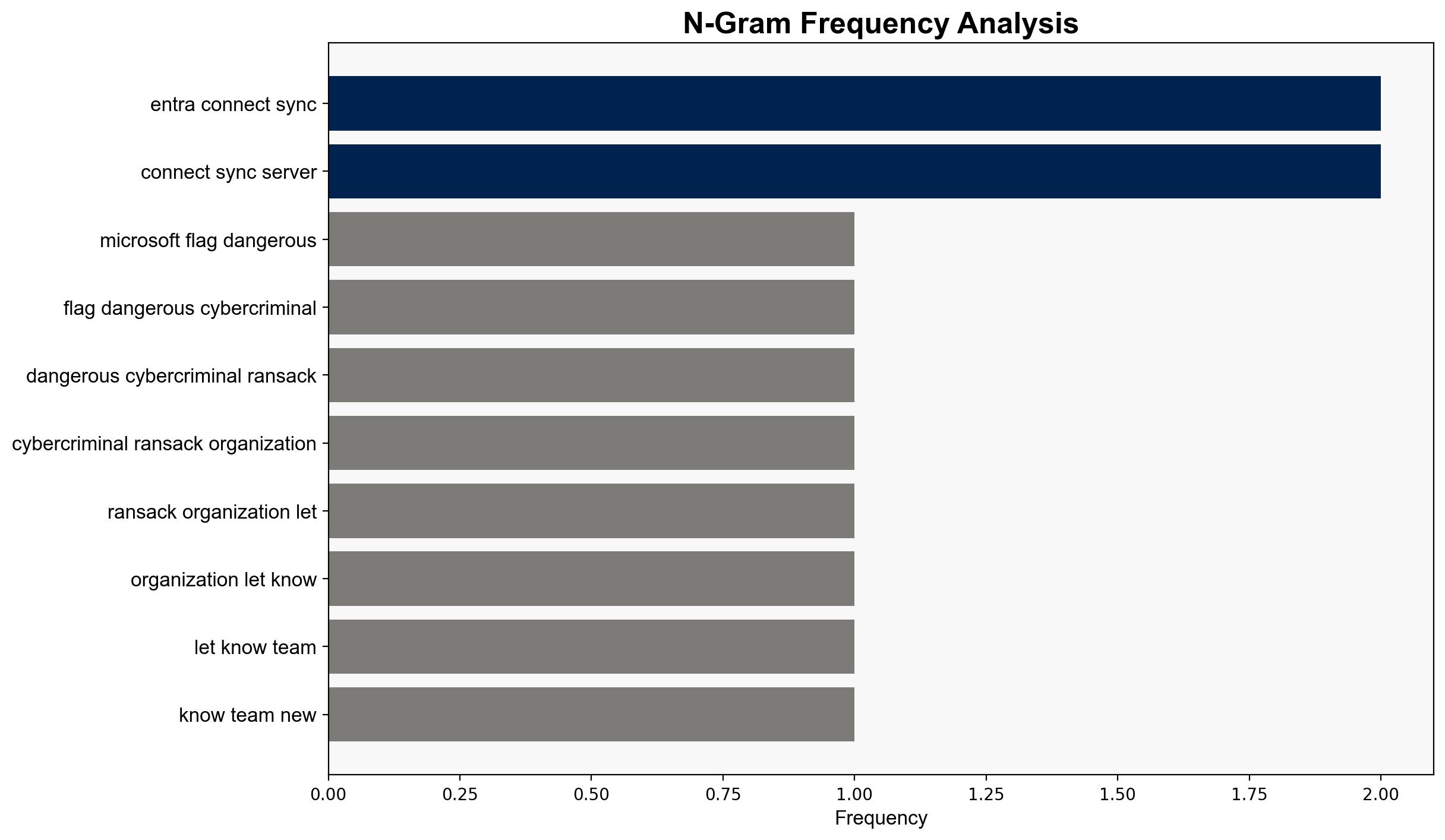Microsoft flags dangerous cybercriminals ransacking organizations – and then letting you know about it via Teams – TechRadar
Published on: 2025-08-28
Intelligence Report: Microsoft flags dangerous cybercriminals ransacking organizations – and then letting you know about it via Teams – TechRadar
1. BLUF (Bottom Line Up Front)
Microsoft has identified a ransomware group, referred to as “Storm,” exploiting cloud and hybrid environments, particularly targeting Azure infrastructure. The group’s tactics involve leveraging Microsoft Teams for ransom demands and using cloud-native capabilities for rapid data exfiltration and destruction. The most supported hypothesis is that Storm is a financially motivated group exploiting systemic vulnerabilities in cloud infrastructure. Confidence Level: Moderate. Recommended action includes enhancing multi-factor authentication (MFA) protocols and monitoring cloud activity logs to detect anomalies early.
2. Competing Hypotheses
Hypothesis 1: Storm is a financially motivated cybercriminal group exploiting cloud vulnerabilities primarily for monetary gain through ransomware attacks. This hypothesis is supported by their focus on data exfiltration and ransom demands via Microsoft Teams, indicating a clear financial motive.
Hypothesis 2: Storm might be a state-sponsored group using ransomware as a cover for espionage activities. This hypothesis considers the possibility of using financial motives as a smokescreen for more strategic objectives, such as gathering sensitive data from compromised organizations.
Using Analysis of Competing Hypotheses (ACH) 2.0, Hypothesis 1 is better supported due to the direct financial tactics observed, such as demanding ransom payments and rapid data exfiltration, which align with typical financially motivated cybercriminal behavior.
3. Key Assumptions and Red Flags
Assumptions:
– The primary motive of Storm is financial gain.
– The use of Microsoft Teams for ransom demands is a deliberate tactic to exploit trusted communication channels.
Red Flags:
– Lack of direct evidence linking Storm to a specific geographical region or known cybercriminal syndicate.
– Potential cognitive bias in assuming financial motivation without exploring deeper strategic objectives.
– Inconsistent data on the group’s previous activities and affiliations.
4. Implications and Strategic Risks
The emergence of Storm poses significant risks to organizations relying on cloud infrastructure, particularly those using Azure. The group’s ability to exploit cloud-native capabilities suggests a sophisticated understanding of cloud environments, increasing the threat of widespread data breaches and operational disruptions. Economically, this could lead to substantial financial losses and reputational damage. Geopolitically, if state-sponsored, it could escalate tensions between nations, especially if critical infrastructure is targeted.
5. Recommendations and Outlook
- Implement robust MFA protocols, especially for privileged accounts, to mitigate unauthorized access risks.
- Regularly update and patch cloud infrastructure to close known vulnerabilities.
- Conduct scenario-based training for IT staff to respond to ransomware attacks effectively.
- Best-case scenario: Enhanced security measures prevent further breaches, and Storm’s activities are curtailed.
- Worst-case scenario: Storm’s tactics evolve, leading to more sophisticated attacks and potential geopolitical conflicts.
- Most likely scenario: Continued financial-motivated attacks with periodic disruptions in targeted organizations.
6. Key Individuals and Entities
No specific individuals are mentioned in the source. The focus is on the group “Storm” and its activities targeting Microsoft Azure infrastructure.
7. Thematic Tags
national security threats, cybersecurity, counter-terrorism, regional focus





